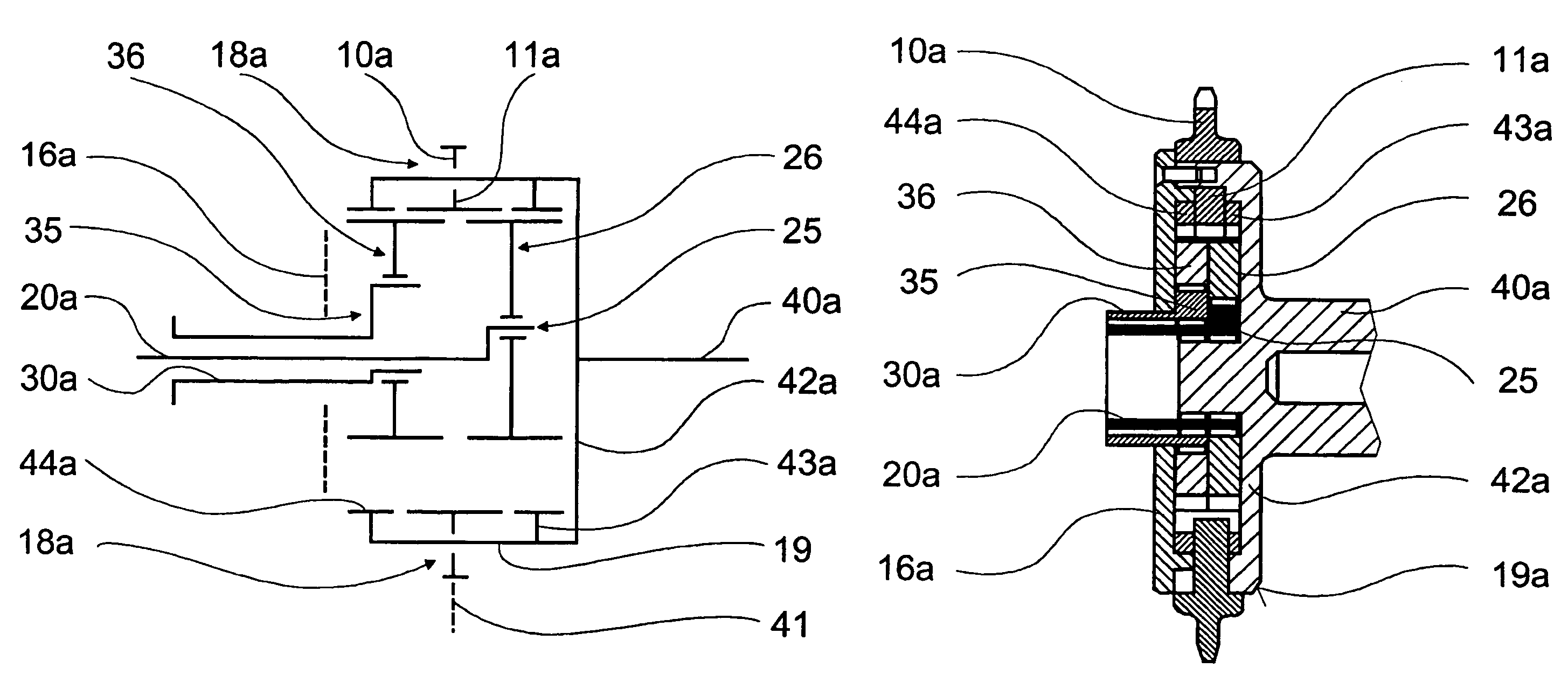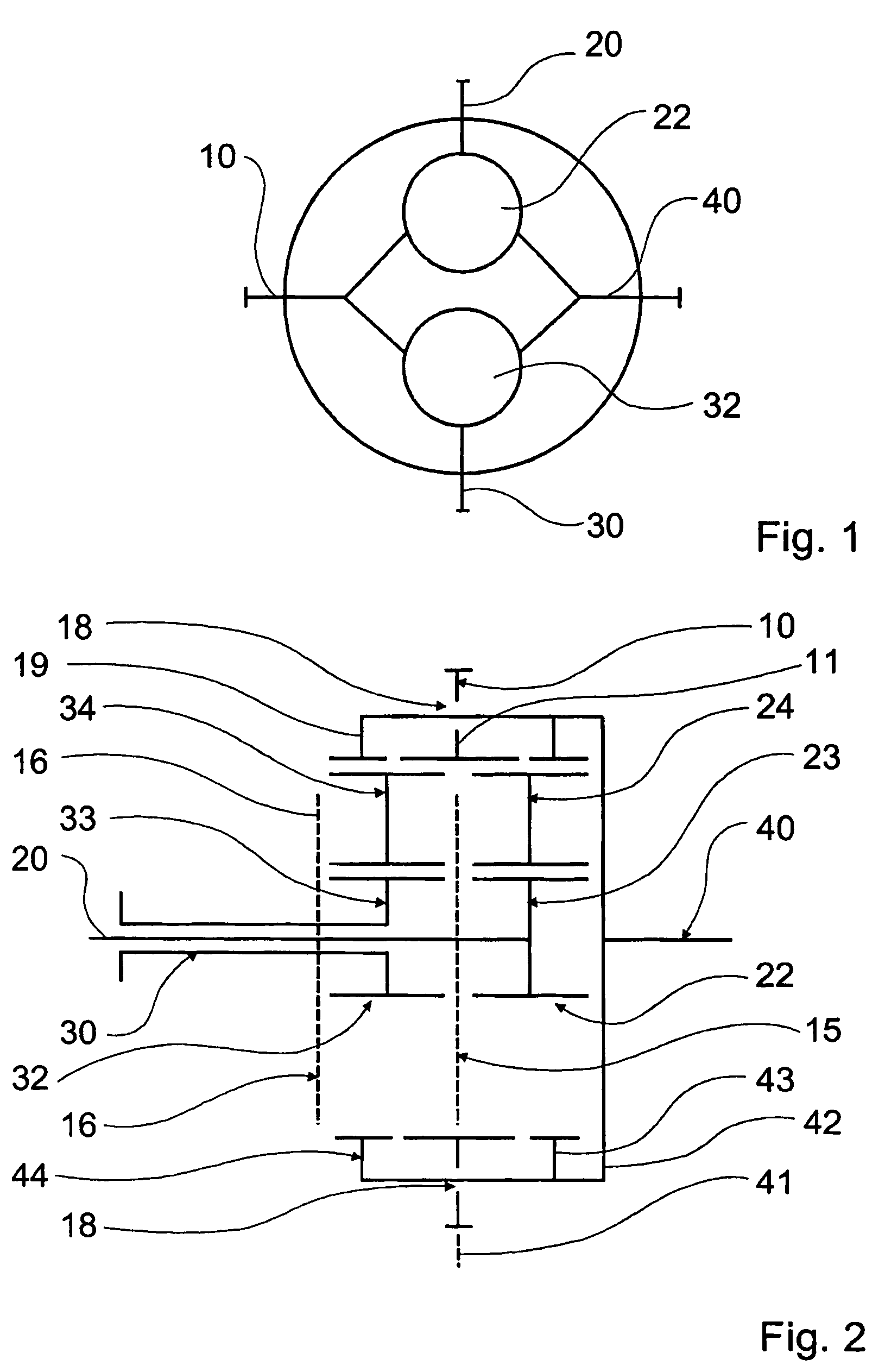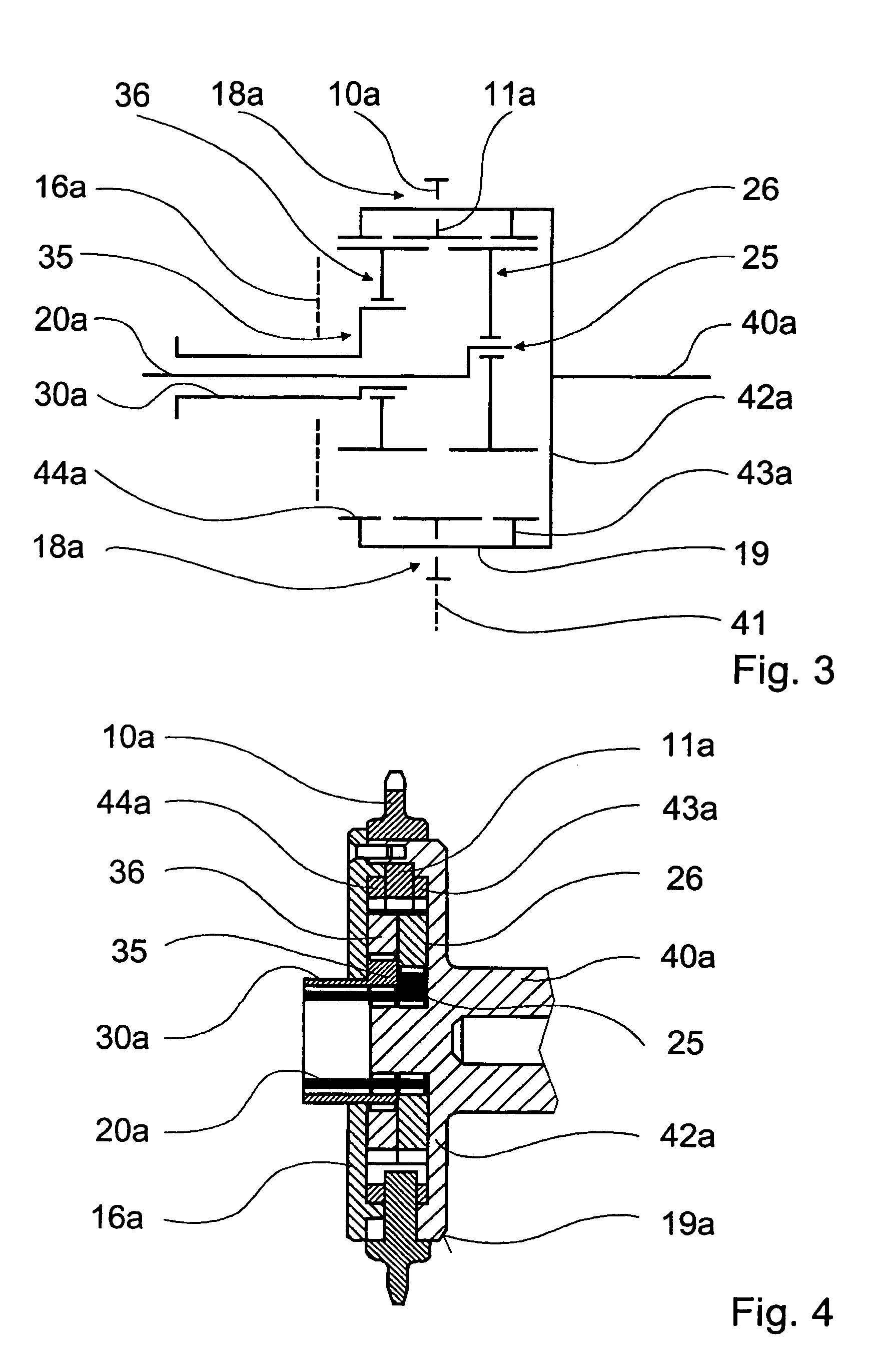Angular camshaft position adjustment drive
a technology of camshaft and position adjustment, which is applied in the direction of valve drives, machines/engines, and gearing, etc., can solve the problems of occupying a relatively large overall space, affecting the and not readily available, so as to achieve low efficiency of camshaft adjustment and facilitate control. control, the effect of simplifying the bearing
- Summary
- Abstract
- Description
- Claims
- Application Information
AI Technical Summary
Benefits of technology
Problems solved by technology
Method used
Image
Examples
Embodiment Construction
[0025]In the figures fundamentally identical or functionally similar parts are indicated by the same reference numerals.
[0026]FIG. 1 shows symbolically a preferred adjusting mechanism with a control device in the form of a four-shaft transmission for adjusting a phase position of a camshaft 40 in relation to a crankshaft (not shown) of an internal combustion engine (not shown), and with a drive gear 10 driven by the crankshaft for driving the camshaft 40.
[0027]Four shafts extend from the adjusting mechanism which comprises a drive gear 10, two control inputs with drive shafts 20, 30 and a transmission output, which is connected to the camshaft 40.
[0028]Each of the drive shafts 20, 30 of the control inputs acts on an associated gear train 22 and 32 respectively, designed as an epicyclic gear train. The two control inputs can be subjected to a drive and / or braking torque (brake torque).
[0029]The two gear trains 22, 32 in the form of epicyclic gear trains can in turn be designed as a c...
PUM
 Login to View More
Login to View More Abstract
Description
Claims
Application Information
 Login to View More
Login to View More - R&D
- Intellectual Property
- Life Sciences
- Materials
- Tech Scout
- Unparalleled Data Quality
- Higher Quality Content
- 60% Fewer Hallucinations
Browse by: Latest US Patents, China's latest patents, Technical Efficacy Thesaurus, Application Domain, Technology Topic, Popular Technical Reports.
© 2025 PatSnap. All rights reserved.Legal|Privacy policy|Modern Slavery Act Transparency Statement|Sitemap|About US| Contact US: help@patsnap.com



